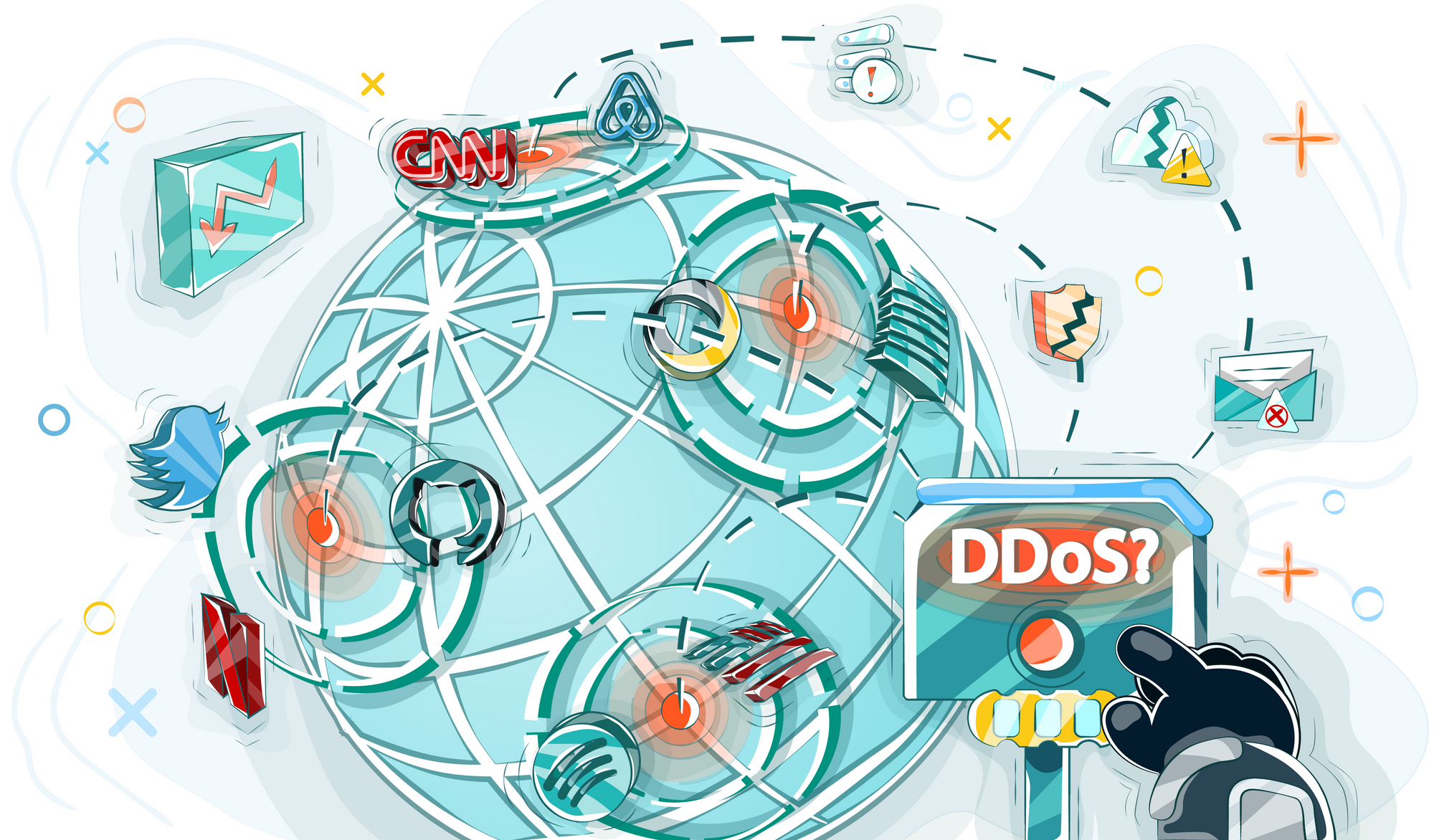DDoS attacks have always been and still remain one of the main threats that can harm or even destroy a business. It's better not to hope that your resources will be untouched. There are several reasons why cybercriminals launch cyber attacks. It's impossible to predict when and who will target you with a DDoS attack. That is why you always need to keep your finger on the pulse. This does not mean that the IT specialists of your company must constantly sit and wait for the attack. But it's better to always be ready.
The good news is that there are certain ways to protect yourself from an attack before hackers decide to use your site as a target. Automated protection is mandatory for any business that exhibits network activity of any level. Simply put, this is important for any company. In King Servers, you can order effective anti-DDoS protection for your resource so you don't have to worry about threats from cybercriminals. But today we will have a look at this issue in more detail and tell you how automated systems stop DDoS attacks.
DDoS attack mechanisms
There are many types of cyberattacks of this kind. Nevertheless, in general, their essence is the same. Each resource has a certain limit on the amount of incoming traffic. Hackers launch many unauthorized requests using infected computers or devices of unsuspecting users. As a result, the server does not cope with the load, and the resource ceases to work correctly.
A DDoS attack can be compared to a traffic jam. Imagine a road. A certain number of cars can go along, depending on how many lanes are provided for this. If there are many cars, for example, at rush hour, traffic slows down. If dozens of more cars begin to rebuild from secondary lanes, the traffic will practically stop at all. Such situations can happen both on the six-lane district of Amsterdam and on single-lane roads in the vicinity of Tula.
So, such slowerages are a matter of chance. If your resource has become popular, for example, due to the action you hold, then the flow of visitors will increase. As a result, the site will work a little worse than it did before. It will still work, and users will have access - just like people in a traffic jam will get home sooner or later. But if a traffic jam has already formed, then the cars will stand there indefinite time, and nobody can say for sure when they will get to their destination. The resource with too much traffic will stop as well. It will temporarily stop working.
One day, cars will continue to drive in a normal flow. But the result of previous problems will be losses both for the road service and for drivers who will be late for the plane or will spend extra liters of diesel. But you can do something so that the traffic jam does not form at all. To do this, you need to think a few steps forward: provide for a competent road junction and quickly call the traffic controller to the place of a traffic jam. Transferring the situation with the traffic jam to Internet resources, such a measure will be the use of anti-DDoS protection. Each of the cars will go its own way, so those who drove onto the highway by chance will be redirected in the right direction. This is how the DDoS protection system works, simply put. Let's pay attention to their algorithms in more detail.
How do DDoS protection systems work?
A cyber attack is a lot of third-party requests. Among visitors, there are both infected devices and real users. The fight against DDoS attacks consists primarily of filtering requests. Casual schoolchildren from Vietnam could infect their computers by clicking on an advertisement when watching a film on a pirated website. Their devices together will constitute a large flow of unauthorized traffic. But, as we have already said, along with them there are real requests from users. Let's suppose we're talking about a game server. An increased load will cause the site to work incorrectly. Hundreds or even thousands of users will not be able to enter it normally, and if they do, they will not play in normal mode.
The output is already intuitively understandable. You need to make sure that infected devices do not access the site. Naturally, it's impossible to do it manually, as nowadays hackers launch multi-gigabit DDoS attacks. For such cases, you need protection from hacker attacks. The system you use on your resource will filter out requests from intruders without shutting down the ability to log in to real users.
Modern security systems trigger tiered traffic cleanup to filter third-party requests from attackers and close access for them. An efficient solution is filtering based on geographical distribution. Traffic arrives at geographically distributed centers to clean up unwanted requests. The load is transferred to other equipment so that the server of the client will not be overloaded. Devices to which traffic will be redirected are designed to work with increased loads. Thanks to powerful resources, high-performance servers that redirect requests from infected computers will filter them without any delays.
Hardware is also used to filter requests. Hardware-based firewalls help to filter network traffic, which allows you to monitor and skip only the correct requests. Specified templates are used for this purpose, which does not let unauthorized traffic in.
After the traffic filter begins to work, only pure requests from verified users who enter the site at their own wish will be received, but not because they accidentally clicked on that icon on the site. The attack may still continue, but visitors will not notice any trick. As for really large attacks, companies may face really bad consequences, like completely shut down SEO settings. But if the owners have provided protection against cyber attacks in advance, the problems will be minimal.
King Servers protection system: a powerful weapon against DDoS attacks
Let's recall the analogy with a traffic jam for the last time. Sometimes traffic jam does little harm. The citizens go outside the city on a day off, spend on the road 2-3 hours, and successfully get to the cottage. The result will be a bad mood and fuel loss when driving in the first gear, but nothing more. But sometimes the consequences are much more significant. In 2010, in China, drivers were in a traffic jam for 2 weeks - and one can only imagine how much time and energy they lost. The more powerful a cyberattack is, the more difficult it will be for your business to survive.
So that you do not feel even minimal consequences, we strongly recommend protecting preemptively. Our system allows you to counter cyber attacks up to 100Gbps. Our protection is multi-level, which makes it possible to effectively combat the actions of intruders. To clear traffic, we use the following:
- hardware;
- geographically distributed filtering with a network capacity of 1 TB/s.
We do not use external means to filter traffic. Only our own filters are used. This approach helps to avoid even minimal delays in stopping a cyber attack. Due to the lack of third-party filtering, our traffic cleaning is considered one of the fastest in Europe. Our filters can operate in-line and out of path modes. King Servers clients can configure filtering for incoming requests only. There will be no restrictions on outgoing traffic in this case.
To filter traffic, you can choose one of the ways for it to pass:
- GRE tunnels;
- cross-connect;
- VLAN and others.
With all of the benefits of our cyber-attack protection we have previously mentioned, we also ensure that your resources are available 24 hours a day, so you can avoid disrupting your business processes. Contact us in any convenient way to protect your company from intruders. By anticipating a possible attack by hackers, you can save yourself from cyberattacks, like thoughtful road junctions protect highways from traffic jams.

























